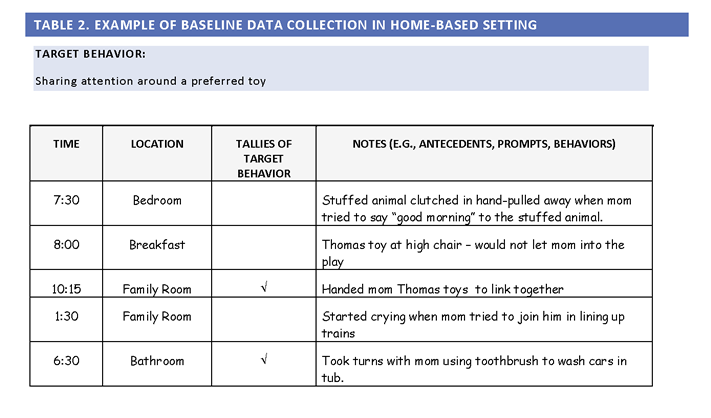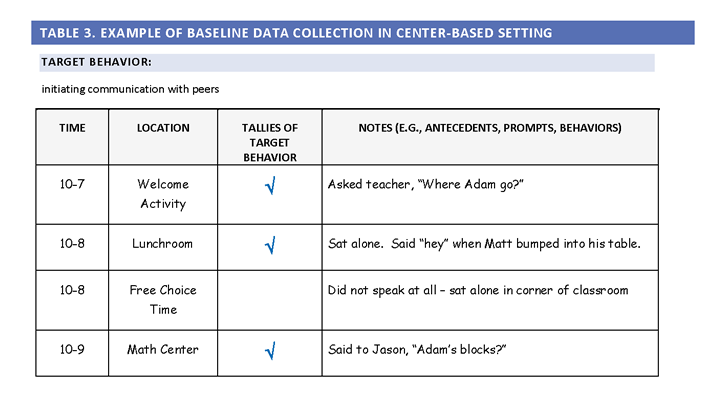Step 1.2 Collect baseline data
It is important to have a clear understanding of the toddler's baseline skills before beginning a naturalistic intervention.
Take data on the target skill or behavior a minimum of three times in more than one environment on more than one day.
A frequency log of how often these behaviors occur in a variety of settings may be useful when collecting data. These baseline data will be critical for assessing whether or not the intervention is effective.
Example of Baseline Data Collection in a Home-based Setting

Example of Baseline Data Collection in a Center-based Setting

With information from a log like these, you can identify how frequently toddlers currently use the target behavior. In the notes column, you might indicate prompts that were used, environmental cues, or other antecedents to the demonstration of the target behavior.
Language sampling can provide useful information about toddlers who are using words or phrases regularly. A language sample will provide information on the current length and content of utterances as well as antecedents to their production. A speech/language pathologist (SLP) on the toddler’s team should be able to take and analyze a language sample.


